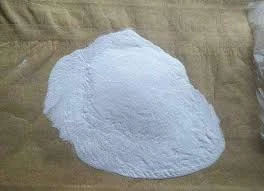The Use of HPMC in Construction Enhancing Performance and Durability
Hydroxypropyl methylcellulose (HPMC) is a versatile cellulose ether widely used in various industries, particularly in construction. This synthetic polymer plays a significant role in improving the properties of construction materials, thus contributing to the overall performance and durability of structures. This article explores the applications, benefits, and significance of HPMC in the construction sector.
Understanding HPMC
HPMC is a non-ionic, biodegradable polymer derived from cellulose. It is produced by the chemical modification of cellulose through processes that introduce hydroxypropyl and methoxy groups. The result is a compound that is soluble in water and exhibits excellent thickening, emulsifying, and film-forming properties. Its unique characteristics make HPMC a preferred additive in construction materials such as mortars, plasters, adhesives, and concrete.
Applications of HPMC in Construction
1. Tile Adhesives HPMC is extensively used in tile adhesives for ceramic and porcelain tiles. It enhances the adhesion properties, allowing for better bonding to various substrates. Additionally, HPMC improves the open time, enabling installers to work with the adhesive for longer periods without compromising performance.
2. Cement-Based Mortars In cement-based applications, HPMC is added to improve the workability and consistency of the mortar. This polymer helps to retain water, ensuring that the mortar remains workable for a longer time, which is crucial in hot and windy conditions. The enhanced water retention capabilities ultimately lead to better hydration of the cement, resulting in improved strength and durability.
3. Self-Leveling Compounds HPMC is a key ingredient in self-leveling underlayments. It helps control the viscosity and flow properties of the mixture, ensuring a smooth, even application. The use of HPMC in these compounds not only facilitates easier application but also contributes to the overall strength and durability of the flooring system.
4. Plasters and Renders The addition of HPMC to plasters and renders provides several advantages, including enhanced adhesion, flexibility, and resistance to cracking. Its ability to retain moisture ensures that the plaster cures uniformly, reducing the likelihood of defects and improving the final finish.
5. Concrete HPMC can also be found in specific concrete formulations, where it serves as a water-retention agent. This characteristic is particularly beneficial in preventing rapid evaporation of water from freshly poured concrete, which can lead to surface defects such as cracking and scaling.
hpmc used in construction

Benefits of Using HPMC
The use of HPMC in construction offers numerous advantages
- Enhanced Workability HPMC improves the workability of construction materials, making them easier to mix, apply, and finish
.- Increased Adhesion It helps achieve superior adhesion between construction materials, reducing the risk of failure in bonding.
- Water Retention HPMC retains water, which is critical for the hydration process in cement-based applications, ultimately improving strength and durability.
- Controlled Viscosity The viscosity of construction materials can be effectively controlled with HPMC, allowing for precise application tailored to specific project requirements.
- Environmental Considerations As a biodegradable product, HPMC aligns with the increasing emphasis on sustainable construction practices.
Conclusion
Hydroxypropyl methylcellulose is a vital component in the construction industry, driving innovations and improvements in material performance. Its diverse applications and multitude of benefits make it an indispensable additive that enhances both the quality and durability of construction projects. As the demand for sustainable and high-performance building materials continues to grow, the role of HPMC in construction is poised to become even more significant in the years to come. Embracing this advanced material offers a pathway toward more efficient, robust, and environmentally-friendly construction practices.
-
Rdp Powder: Key Considerations for Wholesalers in the Building Materials IndustryNewsJul.08,2025
-
Key Considerations for Wholesalers: Navigating the World of Hpmc - Based ProductsNewsJul.08,2025
-
Hpmc Detergent: Key Considerations for WholesalersNewsJul.08,2025
-
Key Considerations for Wholesalers: China Hpmc For Tile Adhesive, Coating Additives, Concrete Additives, and MoreNewsJul.08,2025
-
Crucial Considerations for Wholesalers: Navigating the World of Construction MaterialsNewsJul.08,2025
-
Key Considerations for Wholesalers Sourcing Additive For Cement, Additive For Concrete, Additive For Putty from Additive Manufacturer Shijiazhuang Gaocheng District Yongfeng Cellulose Co., Ltd.NewsJul.08,2025




